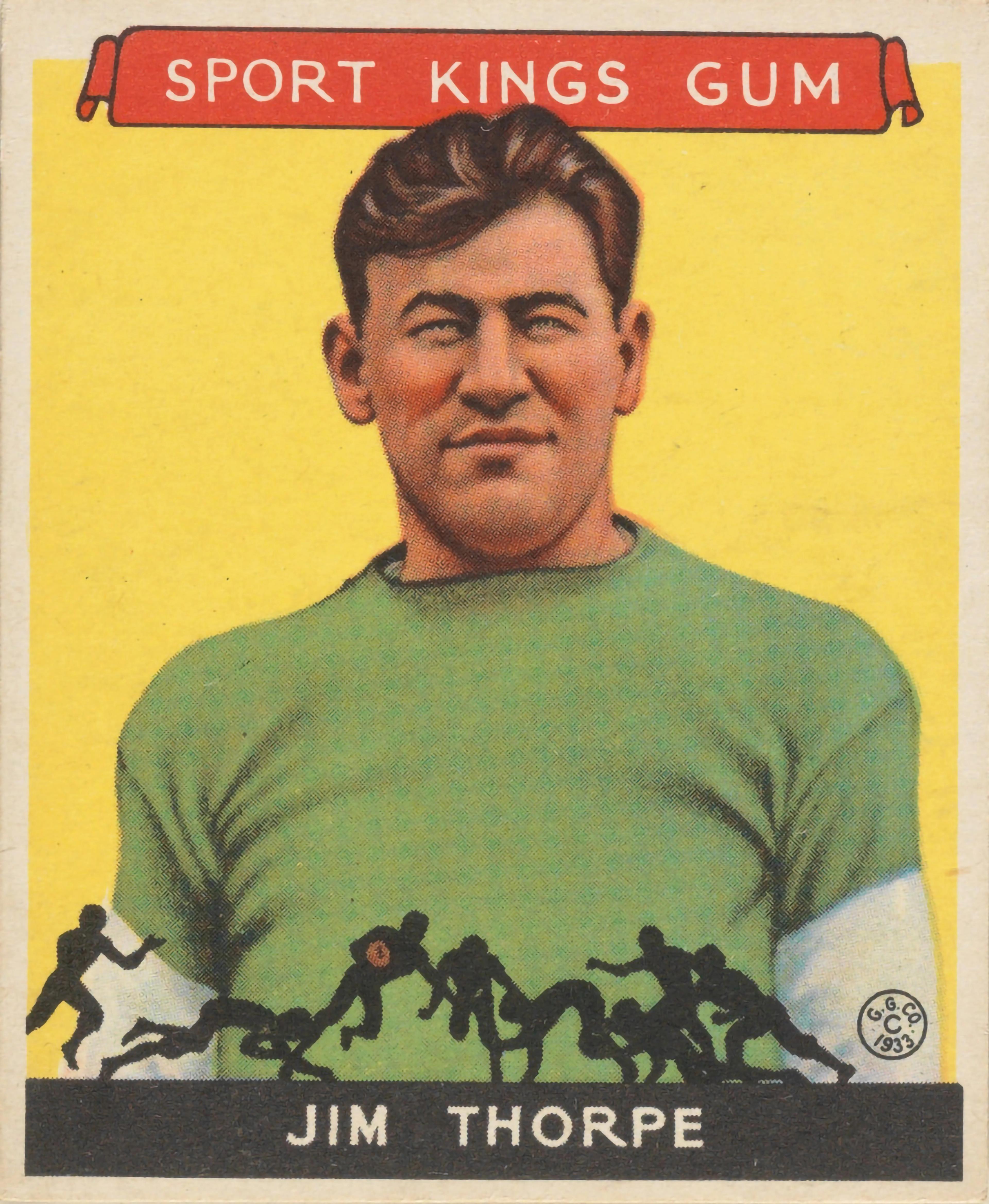On the occasion of the 2014 Super Bowl—the first ever played in the New York area—The Metropolitan Museum of Art is displaying a selection of vintage football cards from its celebrated Jefferson R. Burdick Collection of printed ephemera. The exhibition Gridiron Greats: Vintage Football Cards in the Collection of Jefferson R. Burdick, on view through February 10, features some 150 football cards printed between 1894 and 1959.» Also on view are several works from the Museum's Department of Photographs and a varsity football sweater from The Costume Institute.
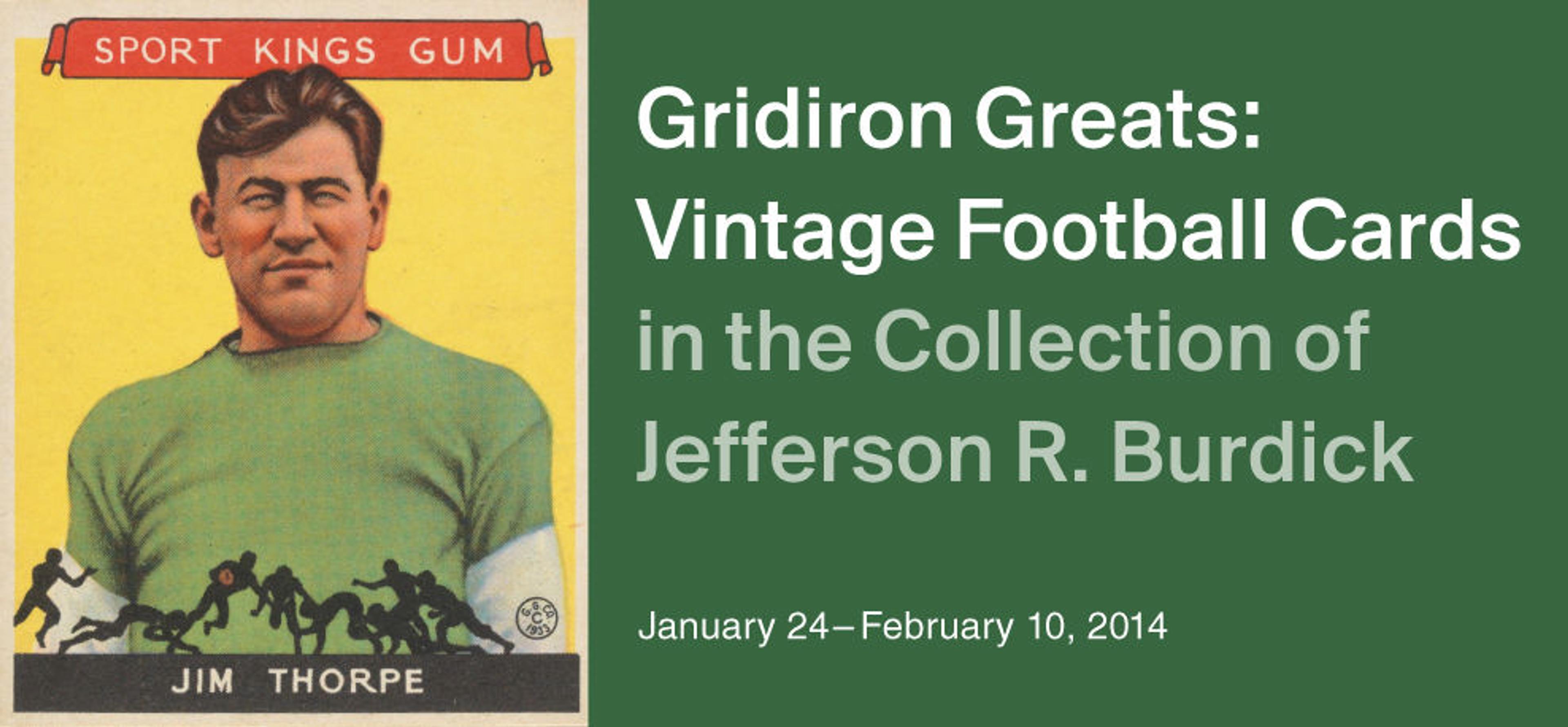
We've put together the following "itinerary" to help you explore the exhibition. Stop and visit all eight selected works to learn about the rookies and Hall of Famers who made football America's most popular sport.
Stop 1: Sweater
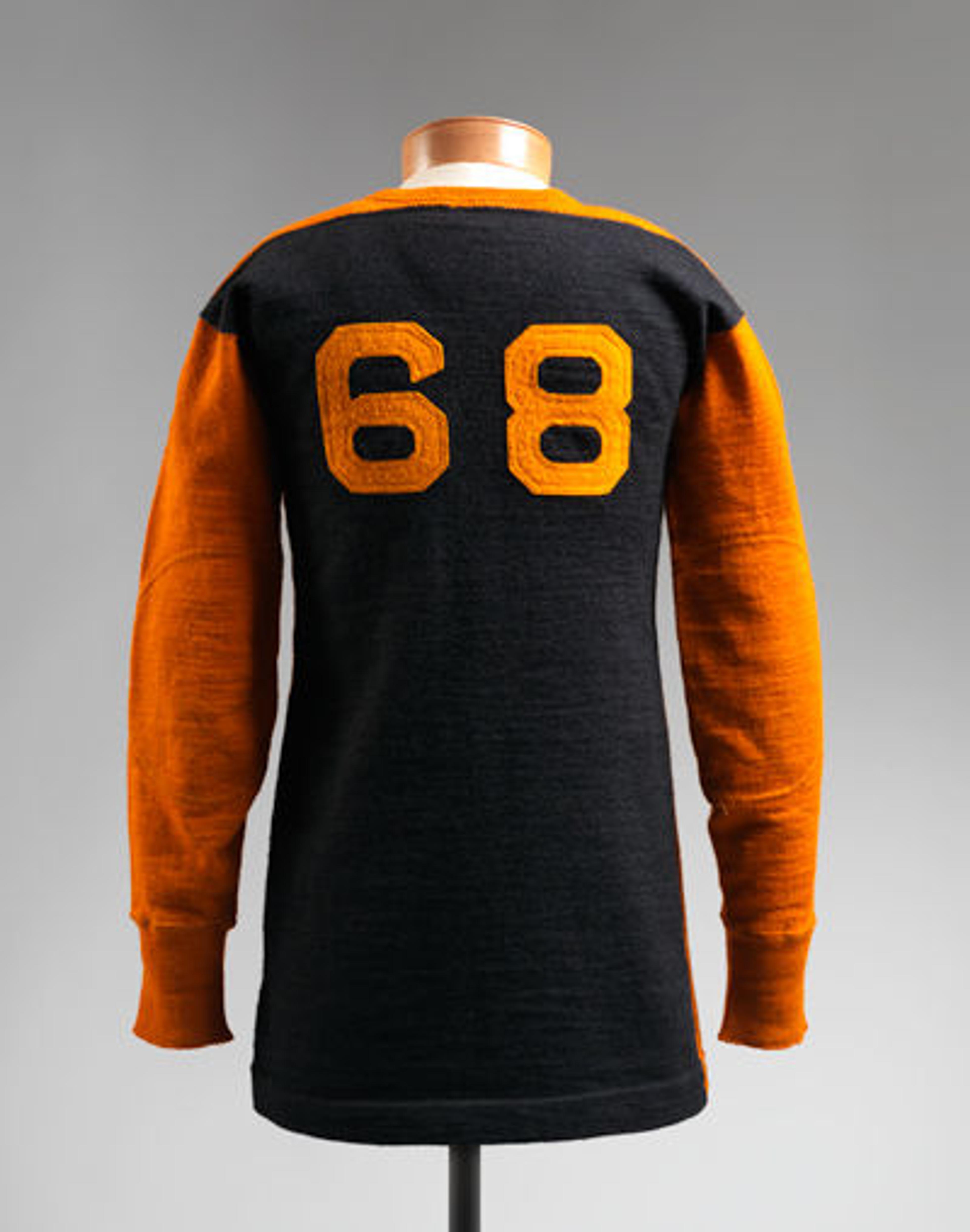
Sweater, 1910–30. American. Wool; Length at CB: 29 1/2 in. (74.9 cm). The Metropolitan Museum of Art, New York, The Jacqueline Loewe Fowler Costume Collection, Gift of Jacqueline Loewe Fowler, 1981 (1981.380.14)
This wool-knit football jersey was a vigorous, collegiate, and competitive icon at a time in which the game of football was largely unspoiled by professional teams.
Stop 2: Wes Fesler Kicking a Football
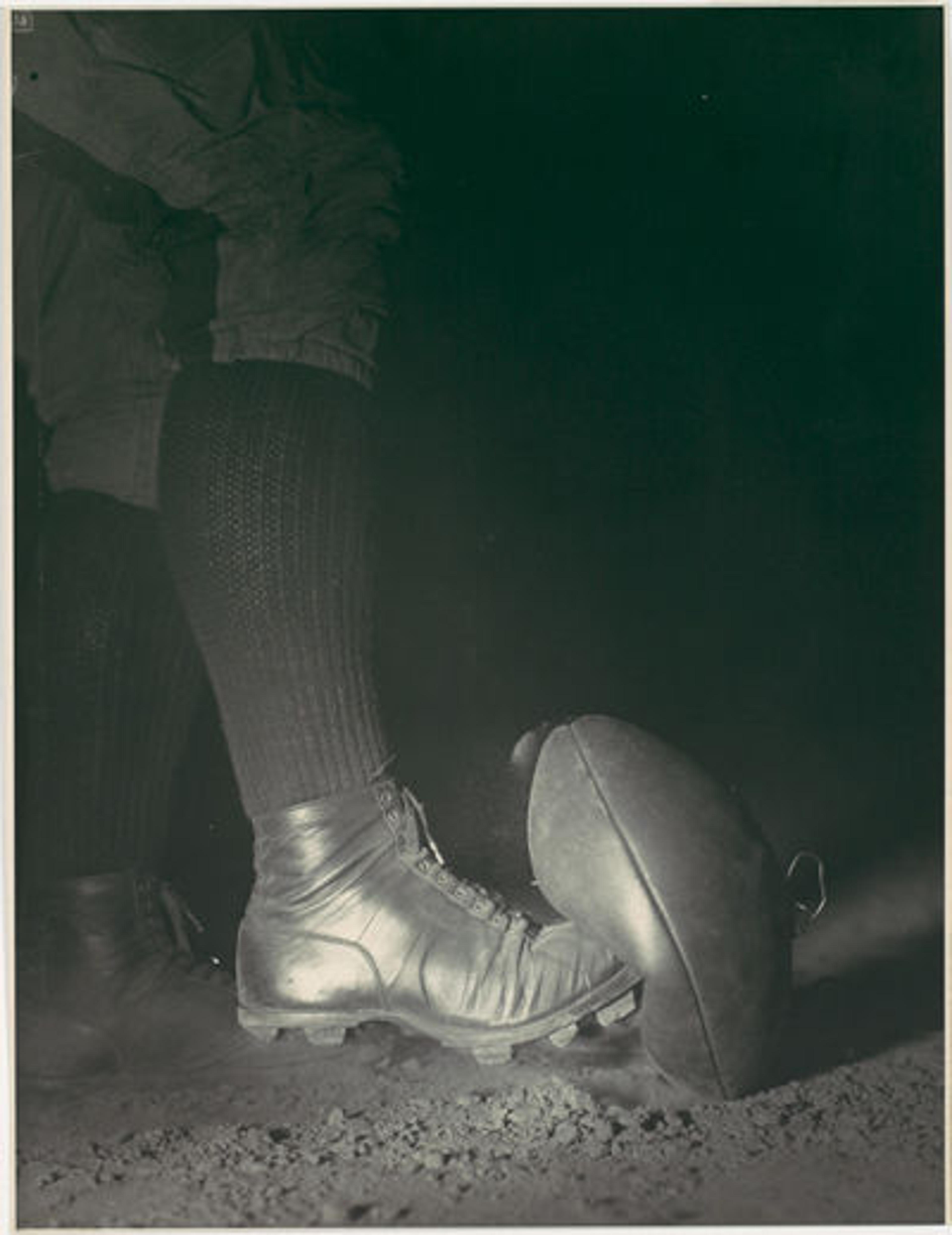
Harold Edgerton (American, 1903–1990). Wes Fesler Kicking a Football, ca. 1935. Gelatin silver print; 12 15/16 x 9 13/16 in. (32.9 x 25.0 cm). The Metropolitan Museum of Art, New York, Ford Motor Company Collection, Gift of Ford Motor Company and John C. Waddell, 1987 (1987.1100.89) © Harold Edgerton @ MIT, 2014, courtesy of Palm Press, Inc.
In 1931, at the Massachusetts Institute of Technology, Dr. Harold Edgerton invented an electronic lamp that made stroboscopic photographs like this one possible. In his book Flash!, Edgerton commented, "At the top of the ball, note the dust suspended in mid-air as the rapidly accelerated ball leaves."
Stop 3: [School Friend of Walker Evans on Football Field, Loomis Institute, Windsor, Connecticut]
![[School Friend of Walker Evans on Football Field, Loomis Institute, Windsor, Connecticut]](https://cdn.sanity.io/images/cctd4ker/production/7154b01057ee40b557cb8406c711b16733ae24df-400x663.jpg?w=3840&q=75&fit=clip&auto=format)
[School Friend of Walker Evans on Football Field, Loomis Institute, Windsor, Connecticut], 1920–21. Gelatin silver print; 4 1/8 x 2 5/16 in. (10.4 x 5.8 cm). The Metropolitan Museum of Art, New York, Walker Evans Archive, 1994 (1994.261.147)
This intimate photograph comes from Walker Evans's personal collection. Likely taken by a local photographer hired by Evans's school, it bears a lighthearted message from a childhood friend.
Stop 4: Acton, Harvard University, from the College Football Stars series (N302) for Mayo's Cut Plug Tobacco
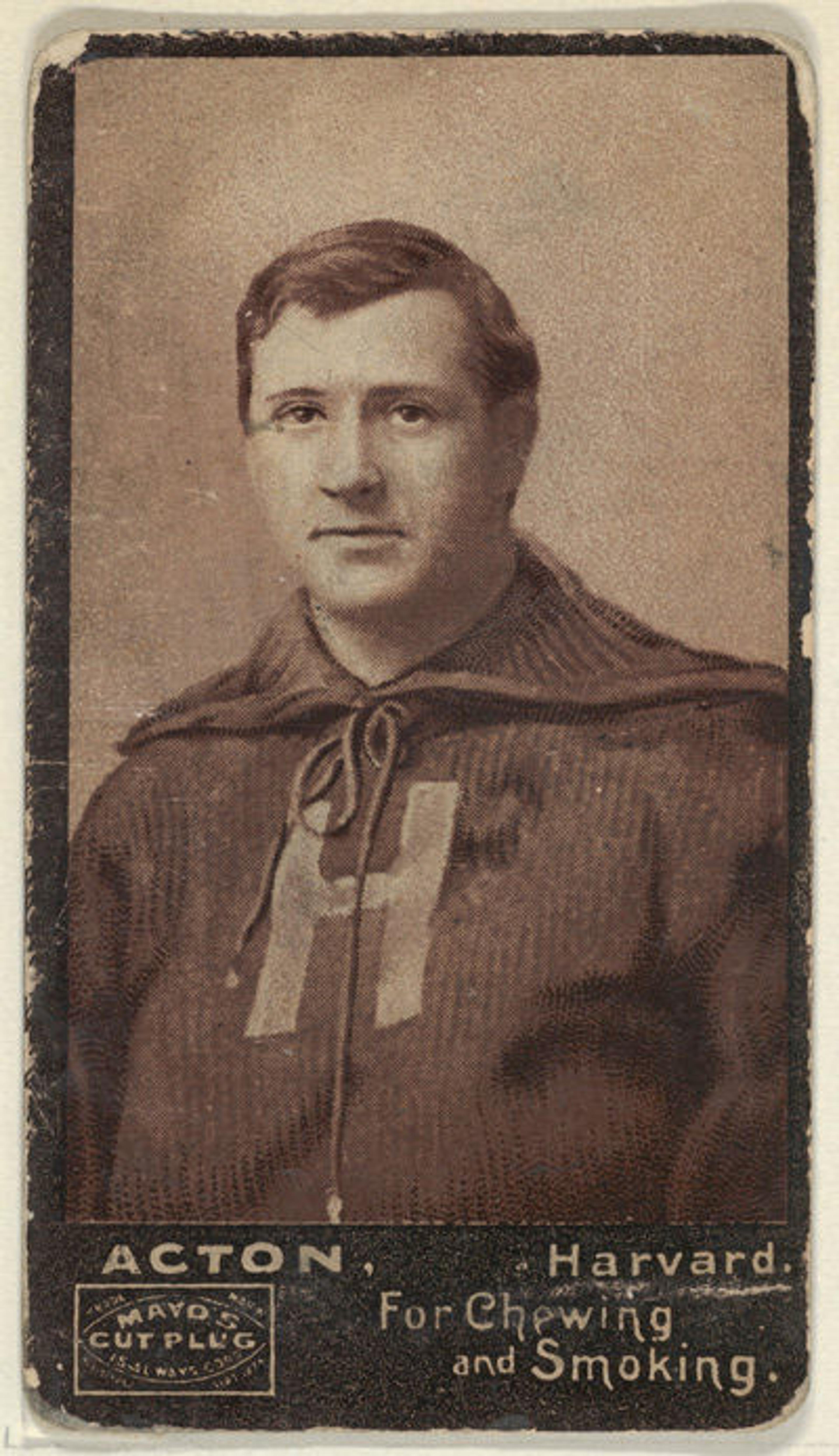
Issued by P.H. Mayo & Brother, Richmond, Virginia (American). Acton, Harvard University, from the College Football Stars series (N302) for Mayo's Cut Plug Tobacco, 1894. Commercial lithograph; Sheet: 2 13/16 × 1 5/8 in. (7.2 × 4.2 cm). The Metropolitan Museum of Art, New York, The Jefferson R. Burdick Collection, Gift of Jefferson R. Burdick (Burdick 222, N302.1)
This card belongs to a series, regarded by all as the first set of football cards ever produced, that includes collegiate players from Harvard, Princeton, and Yale. Princeton played its neighboring school Rutgers University in 1869, setting the stage for all intercollegiate games to follow.
Stop 5: John Dunlop, Harvard University, from the College Football Stars series (N302) for Mayo's Cut Plug Tobacco

Issued by P.H. Mayo & Brother, Richmond, Virginia (American). John Dunlop, Harvard University, from the College Football Stars series (N302) for Mayo's Cut Plug Tobacco, 1894. Commercial lithograph; Sheet: 2 13/16 × 1 5/8 in. (7.2 × 4.2 cm). The Metropolitan Museum of Art, New York, The Jefferson R. Burdick Collection, Gift of Jefferson R. Burdick (Burdick 222, N302.33)
The player shown here is missing his name and school affiliation and is generally regarded as Anonymous. He is, in fact, Harvard's John Dunlop. The card is extremely rare—only ten are known to exist—and is regarded by collectors as the Honus Wagner of football cards.
Stop 6: Red Grange, from the "Baseball and Football" set (R311), issued by the National Chicle Company to promote Diamond Stars Gum

Issued by National Chicle Gum Company, Cambridge, Massachusetts. Red Grange, from the "Baseball and Football" set (R311), issued by the National Chicle Company to promote Diamond Stars Gum, 1936. Albumen print (glossy finish); Sheet: 8 1/16 in. × 6 in. (20.5 × 15.3 cm). The Metropolitan Museum of Art, New York, The Jefferson R. Burdick Collection, Gift of Jefferson R. Burdick (Burdick 324, R311.42)
University of Illinois running back Harold "Red" Grange ran with ghostlike speed and elusiveness, attracting a nationwide fan base and professional scouts. On Thanksgiving Day 1925, days after he left college, over thirty-six thousand people filled Cubs Park (now Wrigley Field) to see his professional debut.
Stop 7: Sheet of twelve uncut football cards, from the Bowman Football series (R407-1) issued by Bowman Gum

Issued by Bowman Gum Company. Sheet of twelve uncut football cards, from the Bowman Football series (R407-1) issued by Bowman Gum, 1948. Commercial color lithograph; Sheet: 10 in. × 6 1/4 in. (25.4 × 15.8 cm). The Metropolitan Museum of Art, New York, The Jefferson R. Burdick Collection, Gift of Jefferson R. Burdick (Burdick 327, R407-1.2)
This simple black-and-white sheet of action shots ushered in the modern era of football cards. It shows twelve players including Kenneth Washington, the African-American tailback at the University of California, Los Angeles, who played alongside Jackie Robinson and became one of the first black players in the National Football League after a twelve-year ban in 1946.
Stop 8: Jim Thorpe, Football
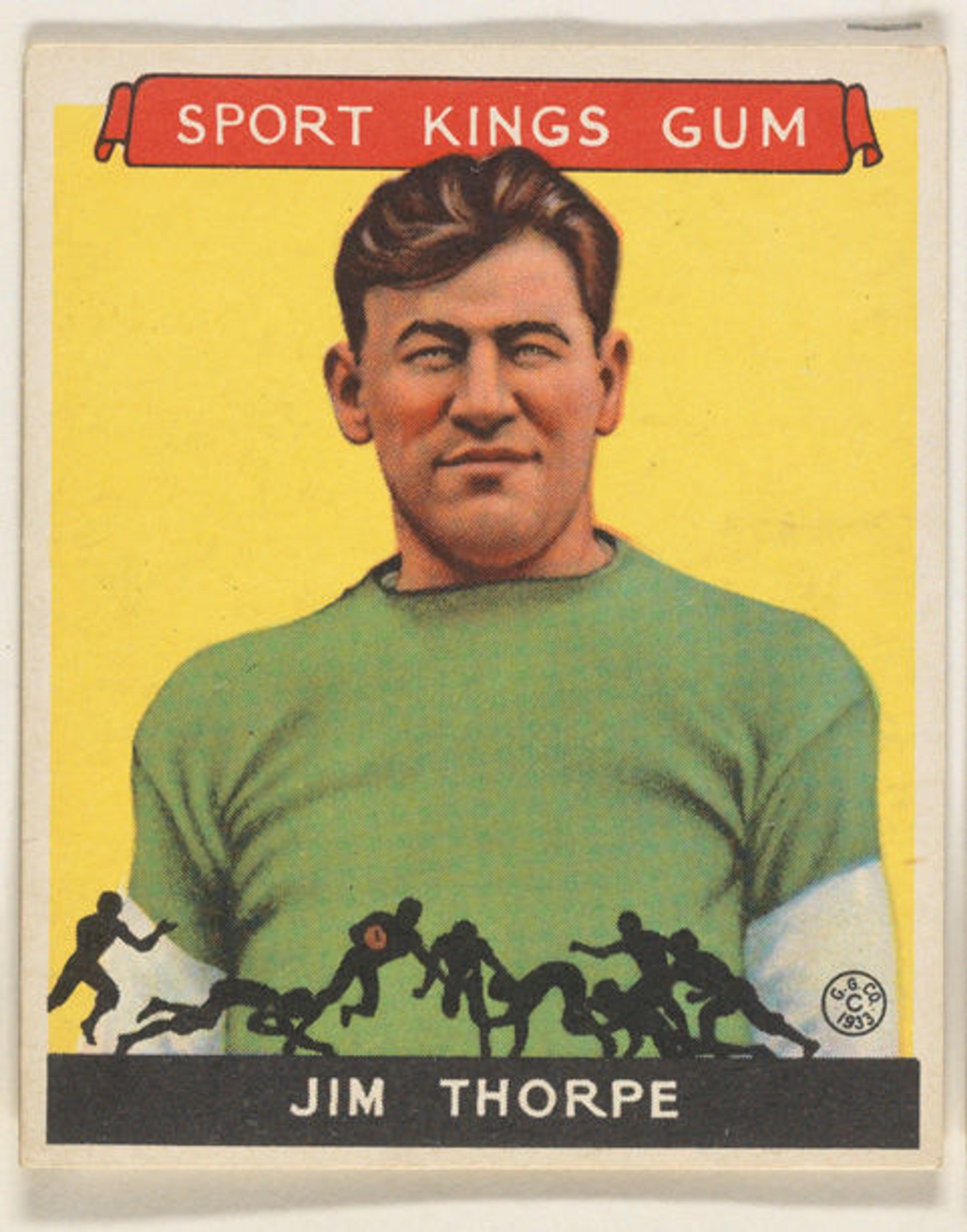
Goudey Gum Company (American, Boston, Massachusetts). Jim Thorpe, Football, 1933. Commercial lithograph; Sheet: 2 7/8 x 2 3/8 in. (7.3 x 6 cm). The Metropolitan Museum of Art, New York, The Jefferson R. Burdick Collection, Gift of Jefferson R. Burdick (Burdick 326, R338.7)
This card belongs to a set of forty-eight that highlights famous athletes from many sports. Football is represented by Coach Knute Rockne, Red Grange, and Hall of Famer Jim Thorpe, who was half Native American. Thorpe also played professional baseball and competed at the 1912 Stockholm Olympics in track and field.
